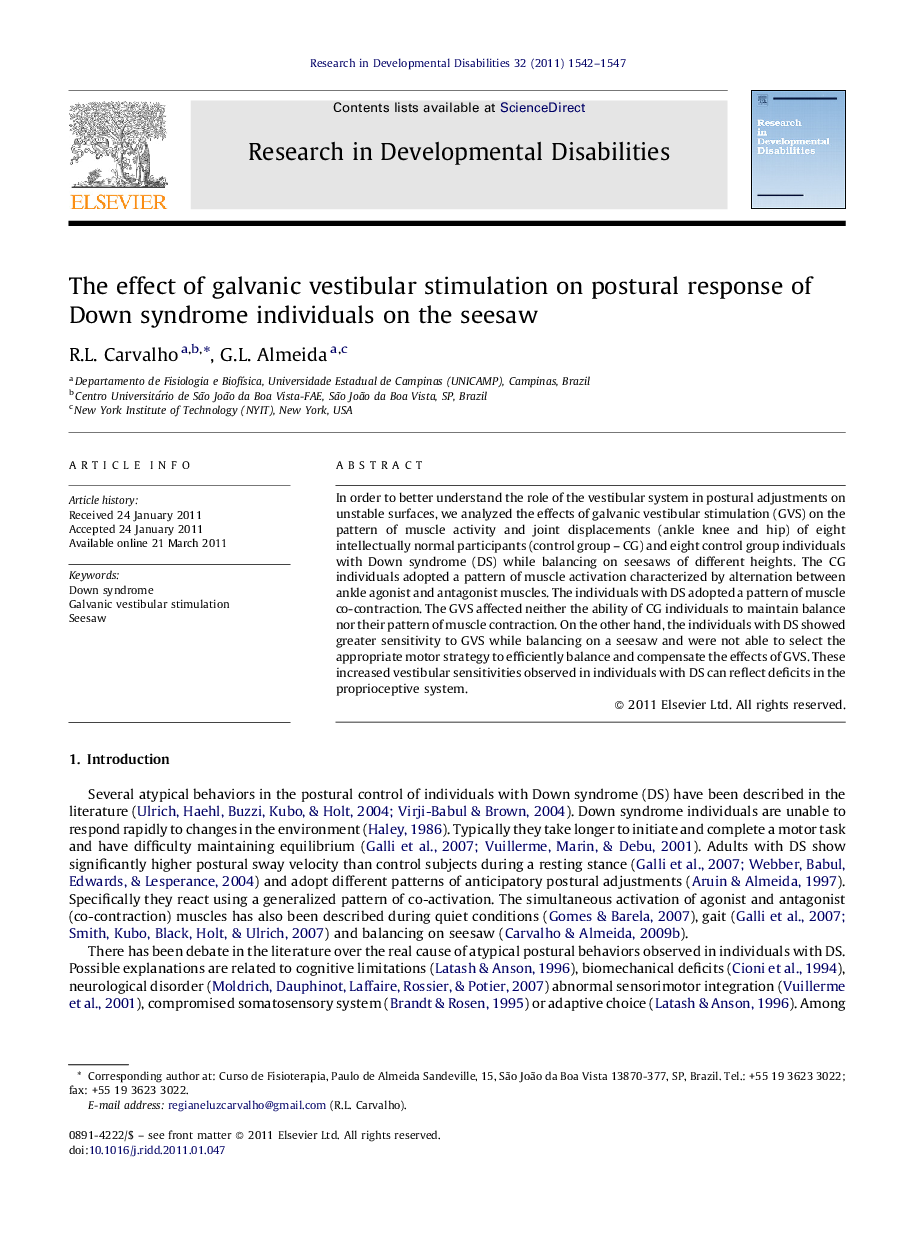| کد مقاله | کد نشریه | سال انتشار | مقاله انگلیسی | نسخه تمام متن |
|---|---|---|---|---|
| 371682 | 621937 | 2011 | 6 صفحه PDF | دانلود رایگان |

In order to better understand the role of the vestibular system in postural adjustments on unstable surfaces, we analyzed the effects of galvanic vestibular stimulation (GVS) on the pattern of muscle activity and joint displacements (ankle knee and hip) of eight intellectually normal participants (control group – CG) and eight control group individuals with Down syndrome (DS) while balancing on seesaws of different heights. The CG individuals adopted a pattern of muscle activation characterized by alternation between ankle agonist and antagonist muscles. The individuals with DS adopted a pattern of muscle co-contraction. The GVS affected neither the ability of CG individuals to maintain balance nor their pattern of muscle contraction. On the other hand, the individuals with DS showed greater sensitivity to GVS while balancing on a seesaw and were not able to select the appropriate motor strategy to efficiently balance and compensate the effects of GVS. These increased vestibular sensitivities observed in individuals with DS can reflect deficits in the proprioceptive system.
► We analyzed sensory contribution to postural control by vestibular stimulation-GVS.
► We compared postural responses of Down syndrome-DS and control individuals-CG.
► GVS affected neither the CG balance ability nor their pattern of muscle contraction.
► In contrast GVS produced large effect on the balance ability of DS individuals.
► The inability to compensate the GVS effects can reflect proprioceptive deficits.
Journal: Research in Developmental Disabilities - Volume 32, Issue 5, September–October 2011, Pages 1542–1547